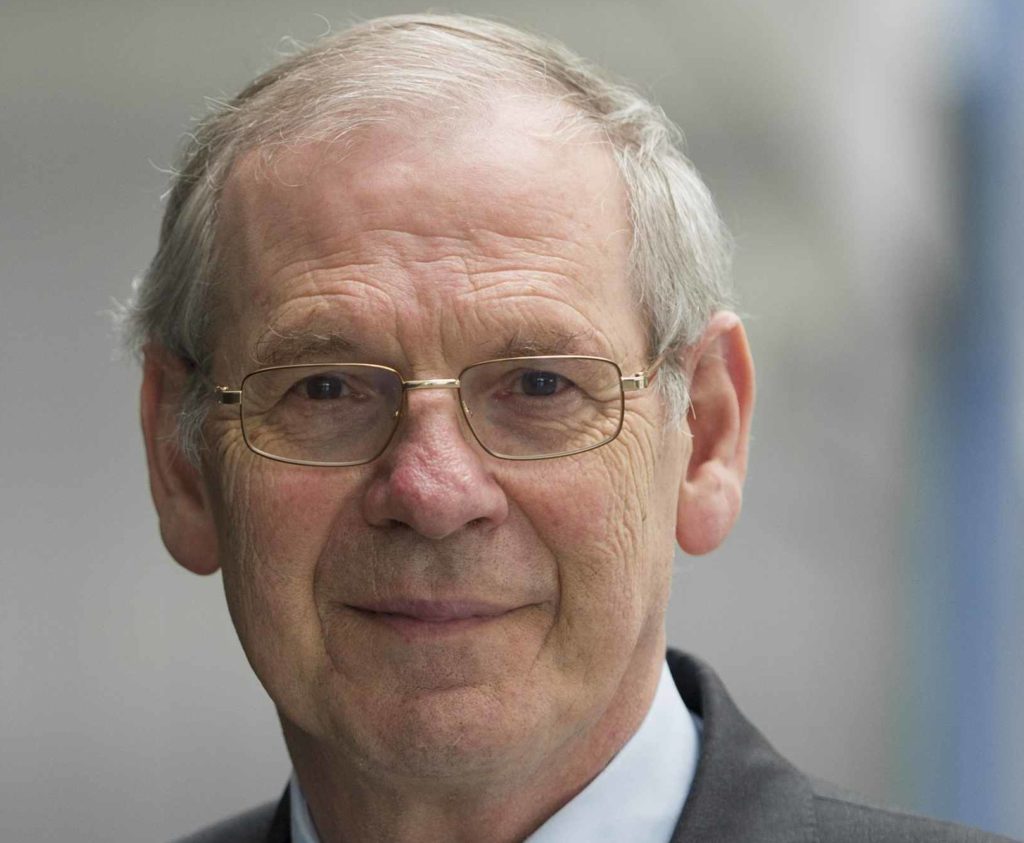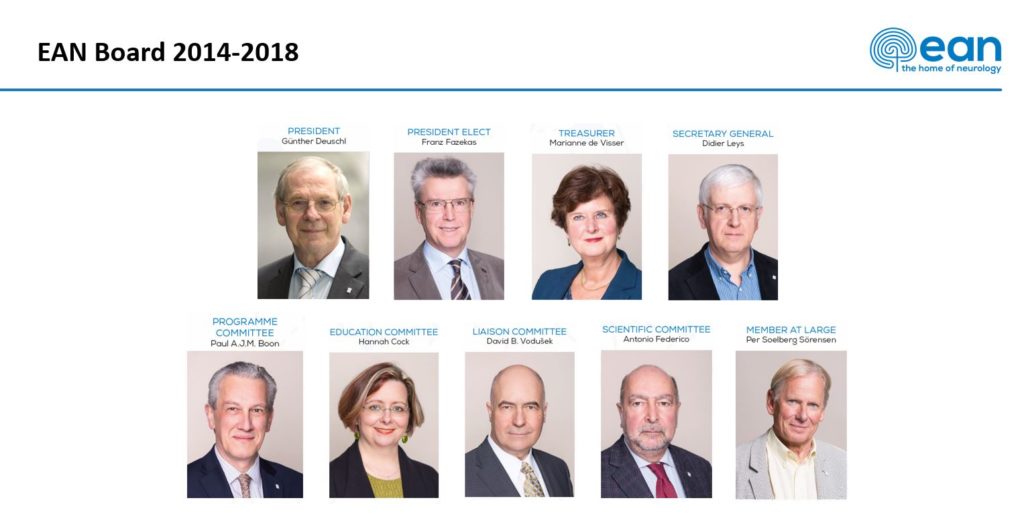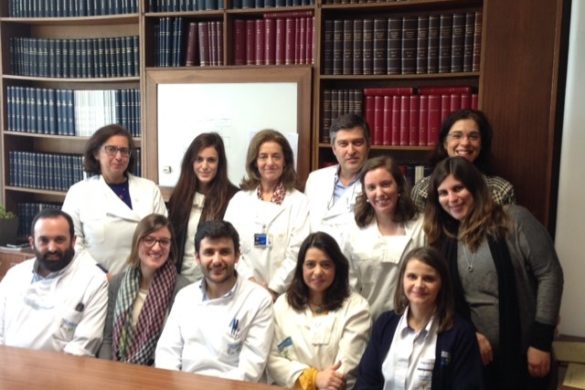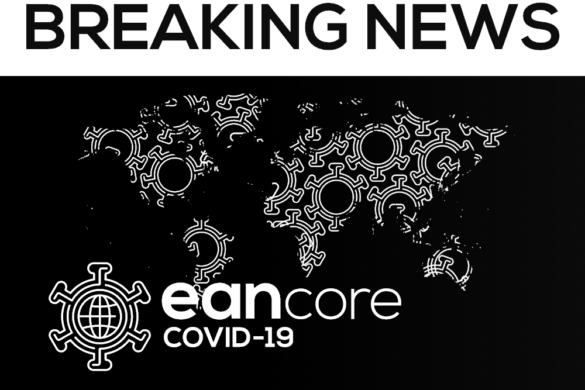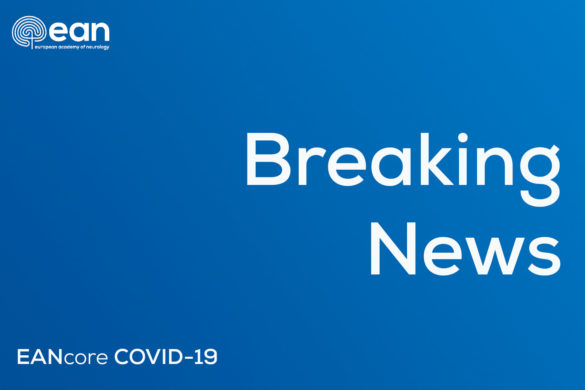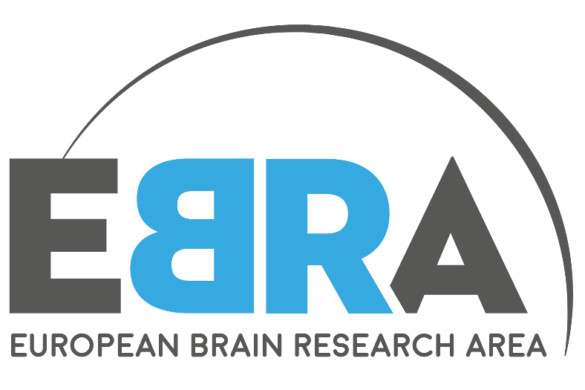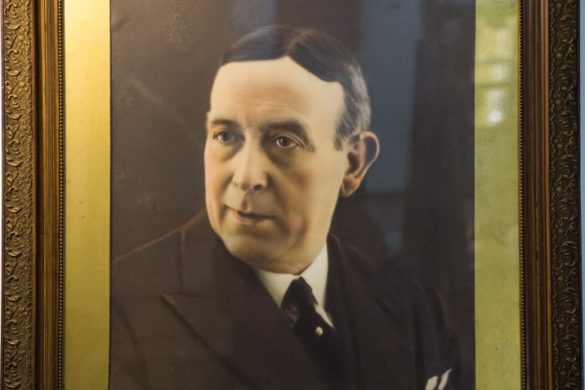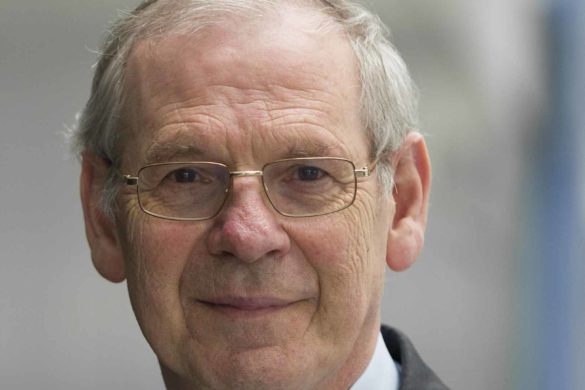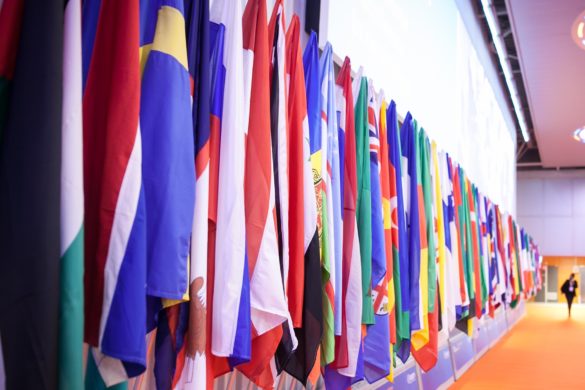by Günther Deuschl
The first team of board members is going to retire after the Lisbon congress and the incoming president, Franz Fazekas from Graz, Austria, will take over. He is an outstanding scientist in the field of Stroke and Multiple Sclerosis and has done a marvellous job for our Society during the past 4 years. His many qualities as an Austrian Cosmopolitan are a guarantee for an integrative presidency for the next years of further development of this young Society. It is my privilege to thank him and the outgoing board for an excellent collaboration.
This team has managed to bring the meanwhile 47 member societies closer together and to find many allies among the European Specialty Societies. 22 Memoranda of Understanding have been developed with our partner societies under the guidance of David Vodusek (chair Communication Committee) with the aim to develop a common action plan how to improve neurological care in Europe.
EAN started as a merger of two Societies, EFNS and ENS, and the goal was to develop a unified neurological representation in Europe. This has worked out extremely well, although the start was not easy. A major milestone was to build an efficient Headoffice, now led by our outstanding Executive Director, Anja Sander. The HO is handling all the many administrative tasks (Secretary General: Didier Leys). Our annual congress will be fully organised by EAN itself from 2019 on, the office has increased manpower, the financial situation has been reordered (Treasurer: Marianne de Visser) and the Headoffice is legally a certified institution working with properly arranged standard operating procedures. We have a steeply increasing ‘full’ membership with meanwhile 928 Members of which 106 are ‘Fellows of the European Academy of Neurology’, an honour for their outstanding service to neurology and the Society. The website has been reorganised under the leadership of Tim von Oertzen and together with the news blog ‘EAN Pages’, edited by Elena Moro, has become a major tool of communication with the 45.000 associate members of EAN.
We are proud to have a powerful Residents and Research Fellows Section taking care of the special needs of the young generation within EAN. Their contribution to making the Society attractive for the next generation of neurologists is of paramount importance.
The congress continues to be the flagship of our Society with more than 6000 participants annually and the Berlin, Copenhagen and Amsterdam congresses were all very successful. Much effort has been put into the development of the scientific programme to consciously fit to the needs of our European membership (Programme Committee chair: Paul Boon). The educational programme has been completely redone and adapted to a 5-year-curriculum covering all fields of Neurology by the education committee (chair: Hannah Cock). The teaching at the congress is more developed towards interactive sessions to increase attractiveness for the participants. In addition, many other educational initiatives of EAN or together with specialty Societies take place all year long in different locations to spread education and the spirit of this Society to Europe.
Among many other tasks the scientific committee (chair: Antonio Federico) and the scientific panels have launched more than 20 guidelines for diagnosis and management of neurologic diseases. This Hercules task will define the standards and needs of neurologic care in Europe and will help to request the necessary funds for taking care of our patients.
EAN is highly active to voice the needs of neurology and neurological patients in various influential committees like the Scientific Panel of Health of the European Commission, the European Brain Council (both Wolfgang Oertel) and the Biomed Alliance (Gunhild Waldemar). The EAN subcommittee on European affairs is working since 2014 and has made major contributions to the ‘Value of treatment’ project together with the European Brain council and our patient partner organisation for patient interests the ‘European Federation of Neurological Associations’. Defining the research agenda for the framework programme 9 is currently one of the main tasks. The definitions of neurological education and training outlined by the European Union of Medical Specialists (UEMS) Section of Neurology will be discussed within a joint education board of UEMS-SN and EAN. The European board exam takes place at our Congress. It will be our common task to translate the neurological standards defined by the EAN guidelines into the European Curriculum for Neurology.
I thank the more than 1000 people working for EAN and, in particular, the board including Per S. Soerensen (Member at Large), Headoffice, the productive committees and the many panels with all their active members just to name parts of the large organisation which helps to make EAN a powerful player for neurological patients and their doctors in Europe and beyond. Together we will be able to fulfil the ultimate goal of EAN which is ‘promoting Excellence in Neurology in Europe’. I also thank our many collaborating Societies and organisations including our partners from industry for sharing this mission. It was a personal great pleasure to serve for this wonderful Society as its founding president for four years and I will be happy to soon move the baton forward to the next Executive Board of EAN to be elected and determined in Lisbon which will move this prospering Society forward.
With gratefulness,
Günther Deuschl

